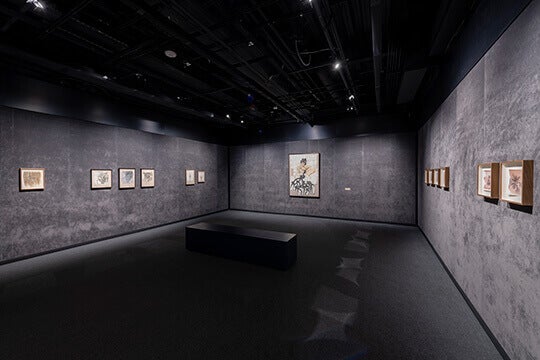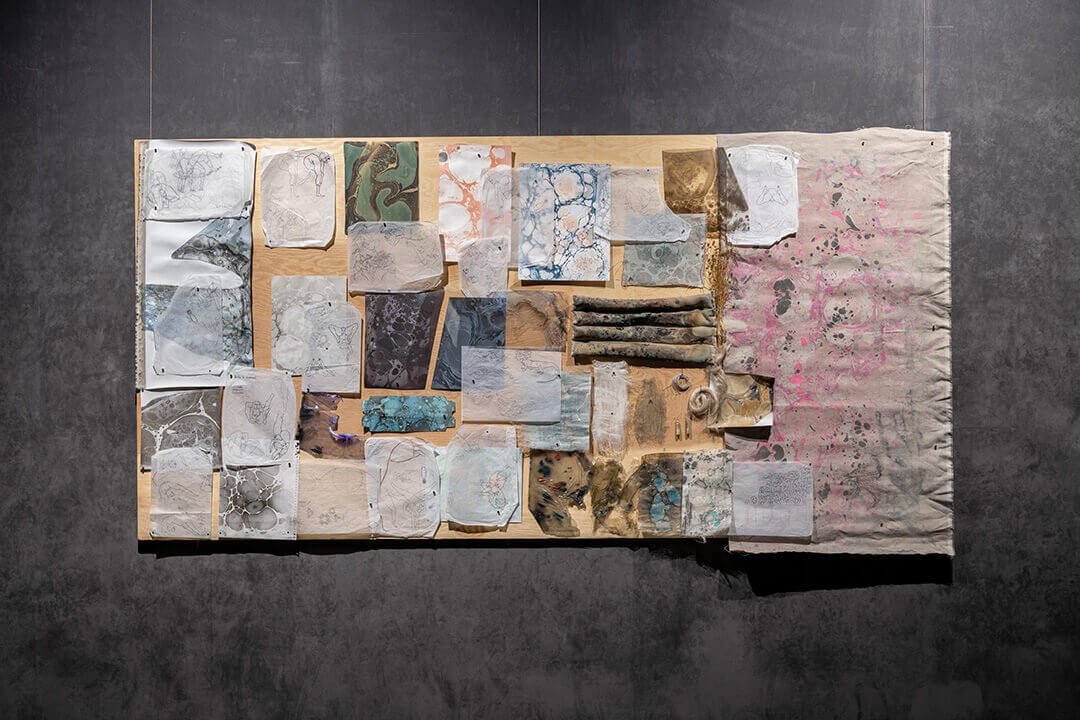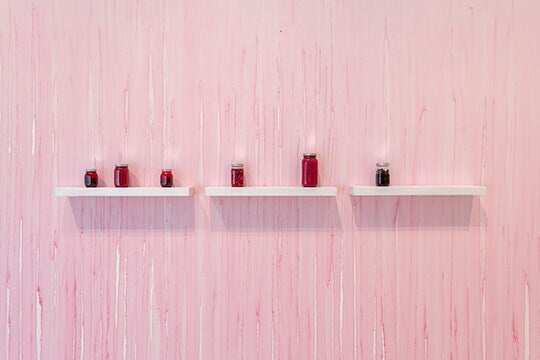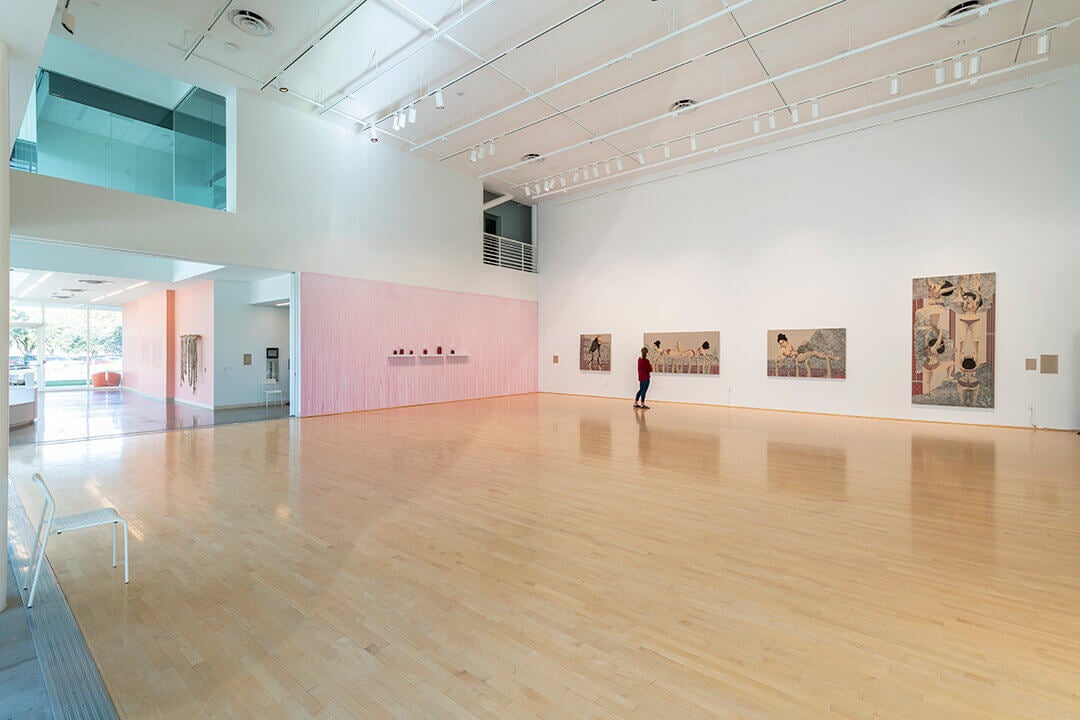Challenging the fear and apprehension of otherness through profound imagery, artist Hayv Kahraman advocates for compassion and acceptance in her new exhibition at Rice University’s Moody Center for the Arts. The artist’s first solo show in Texas, “The Foreign in Us” includes more than 40 works from the past five years of her career, highlighting her technical skill and research-driven practice.

“The work is visually compelling, with the exquisite mastery of color and line as depicted in her large-scale paintings or intimate drawings, and reveals a unique pictorial approach that combines figuration and gestural abstraction in a unique way,” said Frauke V. Josenhans, curator at the Moody.
The works on view are informed by Kahraman’s Iraqi-Kurdish heritage and experience as a refugee as well as her interest in biology and language.
“These works started with an interest in the biosciences, and this was a shift for me,” Kahraman said. “The shift happened in late 2019. In fact, that was when my mom was diagnosed with lung cancer. These works started when I found out about this news.”
She explained how, while attending doctor’s visits with her mother, she began to question the words we use when discussing disease.
“Language matters and has always mattered for me. How you speak about things makes a big difference,” Kahraman said. “The main component is this battle between the self and the other. We’re already setting it up in this divisive rhetoric.”
It’s rhetoric Kahraman heard all too often as a refugee whose family settled in Sweden after the first Gulf War.
“Being ‘othered’ and constantly being seen as an outsider was incredibly difficult,” said Kahraman, who was 10 when her family was uprooted. “As I grew older, I started realizing that even the concept of belonging is violent, because when you say, ‘I belong here,’ you’re automatically saying, ‘Well, I don’t belong here.’ You’re already creating these divisions, and it’s incredibly binary. That’s something that I cannot stand, and that’s something I hope that these works address.”

In the artist’s unique compositions, immunology and microbiology as well as history are approached through the lens of the othered body, often represented in contortionist postures as a means to question normative gender constructions and racial stereotypes that can adversely affect migrant groups.
“Kahraman depicts the human body in various postures that shed light on trauma and violence that are connected to the refugee experience,” Josenhans said. “Her work unravels difficult truths regarding the fear of ‘otherness’ and underlying biases and asks us to not be afraid of our differences but to embrace them instead. Her work is an appeal for tolerance and acceptance, a path for healing for herself and others. In that, her art is at once personal and universal, and very topical.”
In addition to several large-scale canvases, the exhibition features intimate drawings that demonstrate the artist’s meticulous draftsmanship and mastery of line and color.
“There are different levels in which you can access the work, and that’s exactly where I want to go,” Kahraman said. “I don’t want to be fixed in one place. I don’t want the viewer to think a certain way. That’s not the intention. The intention is to open up doors to allow the audience to have their own commotion happening in their own bodies and minds.”

While Kahraman typically paints with oil on linen, she’s been experimenting with unusual materials that she incorporates into her practice, according to Josenhans. That includes torshi, a traditional dish of pickled vegetables that is popular in various countries in the Middle East, which Kahraman used to create a site-specific large-scale wall painting at the Moody.
“In this exhibition, we wanted to highlight her process and her work with various materials, notably flax, as well as her different techniques,” Josenhans said. “Her recent body of work has explored marbling, its history and the process behind it, bringing together a marbled surface and a painted composition. The exhibition includes several large paintings that display large marbled surfaces, but we also included several of her marbled tests on paper, sandpaper, cardboard—among other materials—to stress her investigation of this technique. One gallery gives a glimpse of what the artist’s studio looks like with these marbled tests, sketches and other materials.”
An exhibition catalog featuring original writing by Kahraman, an introduction to Kahraman’s work written by Josenhans and a scholarly essay by Miriam Ticktin, professor of anthropology at the City University of New York Graduate Center, will be published and distributed for international release this spring.
The exhibition “Hayv Kahraman: The Foreign in Us” is curated by Josenhans and designed by MILLIØNS with graphic design by Miko McGinty Inc.


